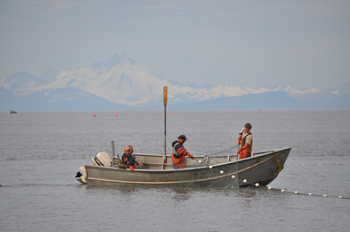This week, an Alaska Superior Court Judge overturned the state’s decision to reject a ballot initiative that proposed to ban setnets in urban areas of the state.
Alaska Cook Inlet setnetters make up a historic fishery and fleet. Amy Grannum photoThe group seeking the initiative represents a very small segment of the sportfishing population in the Cook Inlet area (most of the charter and recreational groups are not supportive of the initiative). But the real danger is the possibility of setting a heretofore unseen precedent that allows the reallocation of a public resource to be decided by a statewide vote (which is not allowed under the Alaska Constitution). Until now, that process has been in the hands of the state’s very well-informed fishery managers.
Judge Catherine Easter agreed with the Alaska Fisheries Conservation Alliance that the ballot initiative simply bans a gear type. She went on to say that the initiative “eliminates the fishery in order to target a specific user group.”
So the fine line is that you can be a commercial salmon fisherman without using gillnets. Therefore, the ballot initiative is allowable because it only bans a gear type of a user group and not that user group altogether.
Yet, when you try to ban a small-boat fleet that has used the gear type for generations, you are, indeed, attempting to eliminate a historical user group.
And when you look at what’s happening in Oregon’s Columbia River, it’s plain to see that attempting to replace one gear type with another is not as easy as it may seem.
In 2012, the Coastal Conservation Association successfully wooed Oregon Gov. John Kitzhaber, and he proposed that the state ban salmon gillnetters from the main stem of the Columbia River with the hopes (yes, a wing and a prayer came before adequate understanding) that despite years of testing seines, they would somehow find them to be far more selective than gillnets in catching wild salmon (as opposed to those released from hatcheries).
What they have found is high mortality rates among the species they hope to conserve.
What will be the long-term result? No one can say for sure, but we will be following the first round of the official commercial seine test fishery come fall. Stay tuned.







